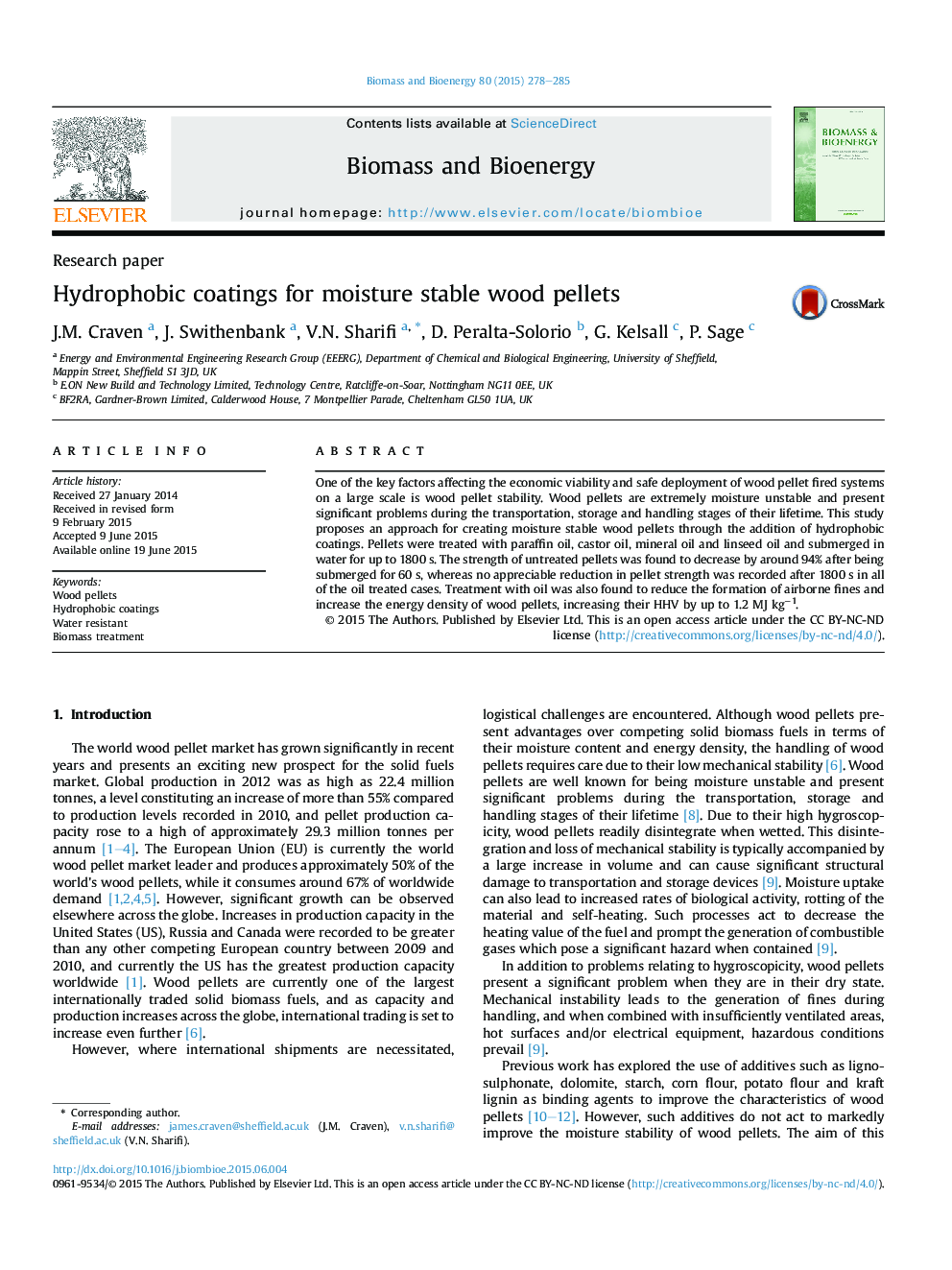| Article ID | Journal | Published Year | Pages | File Type |
|---|---|---|---|---|
| 7063867 | Biomass and Bioenergy | 2015 | 8 Pages |
Abstract
One of the key factors affecting the economic viability and safe deployment of wood pellet fired systems on a large scale is wood pellet stability. Wood pellets are extremely moisture unstable and present significant problems during the transportation, storage and handling stages of their lifetime. This study proposes an approach for creating moisture stable wood pellets through the addition of hydrophobic coatings. Pellets were treated with paraffin oil, castor oil, mineral oil and linseed oil and submerged in water for up to 1800Â s. The strength of untreated pellets was found to decrease by around 94% after being submerged for 60Â s, whereas no appreciable reduction in pellet strength was recorded after 1800Â s in all of the oil treated cases. Treatment with oil was also found to reduce the formation of airborne fines and increase the energy density of wood pellets, increasing their HHV by up to 1.2Â MJÂ kgâ1.
Keywords
Related Topics
Physical Sciences and Engineering
Chemical Engineering
Process Chemistry and Technology
Authors
J.M. Craven, J. Swithenbank, V.N. Sharifi, D. Peralta-Solorio, G. Kelsall, P. Sage,
